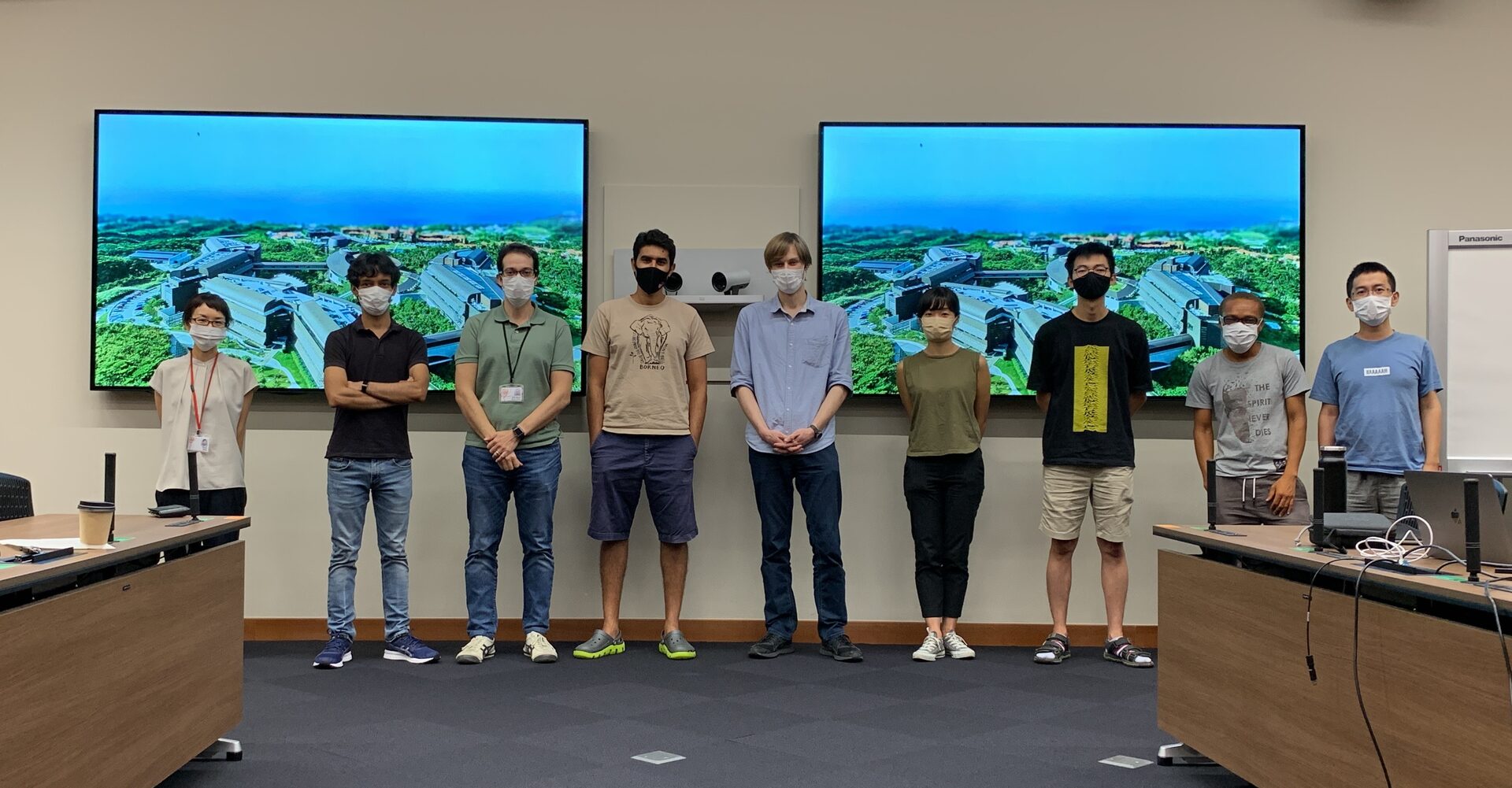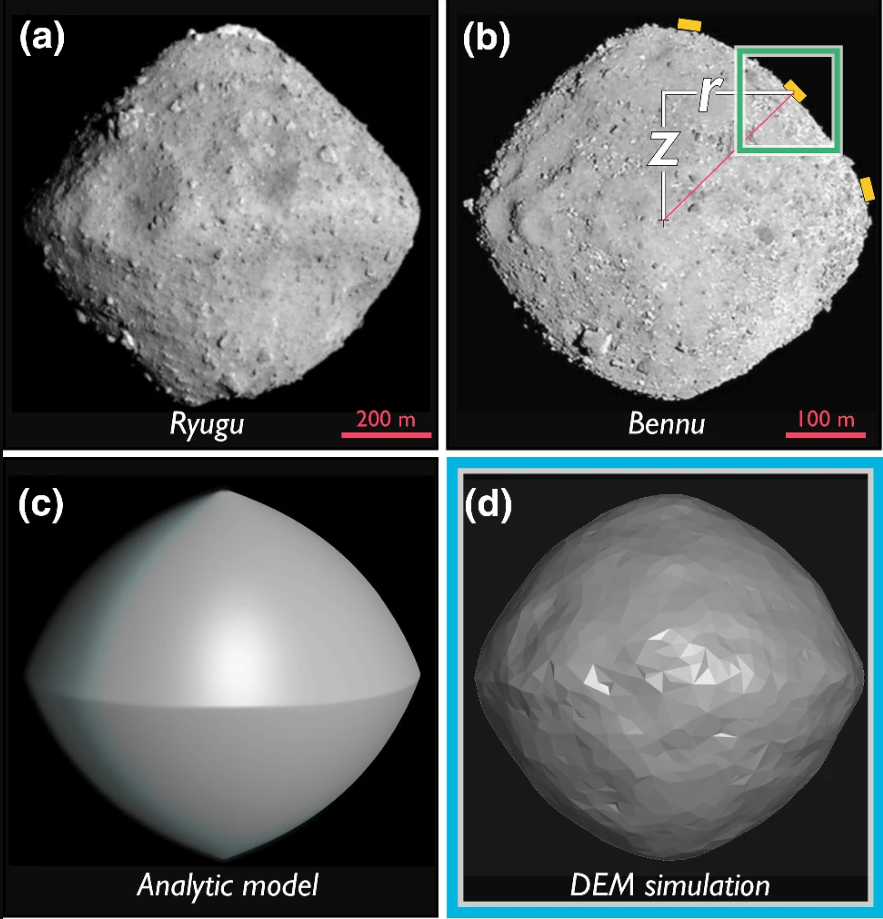FY2021 Annual Report
Fluid Mechanics Unit
Professor Pinaki Chakraborty

Abstract
The Fluid Mechanics Unit pursued research on landfalling tropical cyclones, turbulence theory, and spinning asteroids.
1. Staff
- Pinaki Chakraborty, Professor
- Tapan Sabuwala, Group Leader
- Julio Manuel Barros Junior, Staff Scientist
- Kalale Chola, Postdoctoral Scholar
- Vishnu Ravindran, Postdoctoral Scholar
- Christian Butcher, Research Unit Technician
- Yuna Hattori, Ph.D. Student
- Hanley Andrean, Ph.D. Student
- Bolu Feng, Ph.D. Student
- Lin Li, Junior Research Fellow
- Tomoe Owan, Research Unit Administrator
2. Collaborations
2.1 Theory of spectral link in turbulent flows
- Description: Details and description of the collaboration, if necessary.
- Type of collaboration: : Scientific collaboration
- Researchers:
- Professor Gustavo Gioia, OIST
2.2 Granular flows
- Description: Details and description of the collaboration, if necessary.
- Type of collaboration: Scientific collaboration
- Researchers:
- Professor Troy Shinbrot, Rutgers University, USA
3. Activities and Findings
3.1 Evolution of tropical cyclones past landfall
In the eye of a tropical cyclone (TC) over ocean resides its warm core. It acts as the thermodynamic heart of the TC and is, in turn, fueled by ocean moisture. Thermodynamical processes play an essential role in a TC over ocean. By contrast, when a TC makes landfall, its decay is thought to be akin to a dry vortex spinning-down due to friction with the land, an intrinsically non-thermodynamic process. This "spin-down vortex" model is the prevailing paradigm for understanding the evolution of landfalling TCs. Contrary to the underpinnings of this model, we study the evolution of TCs past landfall using computational simulations where we explicitly account for thermodynamics. (We conduct the simulations using Cloud Model 1.) Our simulations reveal that past landfall the TC's thermodynamical heart—the warm core—does not simply wither away, as would be expected from the spin-down vortex model. Instead, thermodynamic processes modulated by the moisture stored in the TC invariably give birth to a cold core that grows underneath and at the expense of the warm core. Our findings underscore the key role of moist thermodynamics in the post-landfall evolution of TCs. Additionally, they have direct implications on the prevailing weather forecasting methods which invoke the birth of a cold core as a telltale signature of an extratropical transition.

Figure: Birth and growth of cold core in simulated landfall of a TC. We show a cross-sectional view of the TC and the colors represent contours of temperature difference (relative to the sounding temperature) at 0 h (a), 15 h (b), and 30 h (c) past landfall.
3.2 Symmetry analysis of the turbulent dissipation rate
A core attribute of any turbulent flow is the rate at which it dissipates kinetic energy. As befits the notoriously difficult subject of turbulence, the expression for the turbulent dissipation rate is so involved that it is generally infeasible to measure it in most experiments. Remarkably, invoking symmetry considerations (invariance to spatial translation and specific choices of finite rotations), Taylor [G. I. Taylor, Statistical theory of turbulence. Proc. R. Soc. Lond. A 151(873):421-444, 1935] derived a formula for the turbulent dissipation rate that is both simple in structure and relatively easy to measure in experiments. Taylor’s derivation, though ingenious, leaves it unclear if the results hold for any arbitrary rotations. We derive Taylor’s iconic formula using the modern, rigorous approach of the Lie group theory. Our analysis renders it plain that the formula holds for any arbitrary rotations. We build on this approach and consider a different symmetry: invariance to reflection. Surprisingly, we again arrive at Taylor’s formula. Further, we find that the conditions that Taylor obtained for getting the formula, which conditions are routinely used to test the rotational invariance of a flow, are also satisfied under reflectional invariance, with the implication that the conditions are an insufficient test for either symmetry.
3.2 Diamond shapes of spinning rubble-pile asteroids
Recent visits by JAXA and NASA spacecraft to near-earth, rapidly spinning rubble-pile asteroids Bennu and Ryugu have revealed similar diamond-shaped profiles, with higher elevations at both equator and poles. These diamond shapes cannot be captured by current models, which argue that centrifugal forces drive material from the poles to the equator and thus result in flattened shapes. We argue that the current models are missing a critical ingredient: the effect of debris accretion. Accounting for this effect, we derive an analytic expression for the shapes of such rapidly spinning rubble piles based on the principle that as rubble is deposited it assumes a critical angle of repose. We show that this expression correctly reproduces diamond-shaped profiles. We also conduct granular simulations (using the Discrete Element Method) of debris deposition and show that simulated shapes are in striking accord with both observations and analytical results. Our results suggest that non-uniform debris accumulation may play a cardinal role in the formation of diamond-shaped asteroids.

Figure: Diamond-shaped asteroids. Near-earth asteroids (a) Ryugu (Image credit: JAXA) and (b) Bennu (Image credit: NASA). (c) Analytic prediction of asteroid shape. (d) Exterior surface defined by simulation using the Discrete Element Method (DEM).
4. Publications
4.1 Journals
- T. Sabuwala, P. Chakraborty, and T. Shinbrot. 2021. Bennu and Ryugu: Diamonds in the sky. Granular Matter, vol. 23, article 81. (Cover Image.) PDF
- K. Chola and P. Chakraborty. 2021. Symmetry analysis of the turbulent dissipation rate. Physical Review Fluids, vol. 6, article L082602. PDF
- L. Li and P. Chakraborty. 2021. Birth of a cold core in tropical cyclones past landfall. Physical Review Fluids, vol. 6, article L051801. (Editors' Suggestion) PDF
4.2 Books and other one-time publications
Nothing to report
4.3 Oral and Poster Presentations
- P. Chakraborty, Landfalling typhoons in a warming climate, 35th computational fluid dynamics conference (CFD35), The Japan Society of Fluid Mechanics, Sendai, Japan, December 2021. (Plenary lecture)
- P. Chakraborty, The spectral link in turbulent frictional drag: a review, 1st International Conference on Advances in Fluid Flow and Thermal Sciences (ICAFFTS); Online Symposium, Surat, India September 2021. (Plenary lecture)
- P. Chakraborty, The spectral link in turbulent frictional drag, Australasian Fluid Mechanics Seminar Series, 16 March 2022. (Virtual Seminar)
- P. Chakraborty, The spectral link in turbulent frictional drag, Online Turbulence Seminar, 10 November 2021. (Virtual Seminar)
5. Intellectual Property Rights and Other Specific Achievements
Nothing to report
6. Meetings and Events
6.1 Fusing Big Data and Big Computation in Numerical Weather Prediction
- Date: April 20, 2021
- Venue: Zoom
- Speaker: Dr.Takemasa Miyoshi (RIKEN Center for Computational Science)
6.2 Melting driven by sheared/rotating Rayleigh-Benard convection
- Date: September 28, 2021
- Venue: Zoom
- Speaker: Dr. S. Ravichandran (Nordic Institute for Theoretical Physics)
6.3 Detection, attribution, and projection of tropical cyclones affected by global warming
- Date: November 2, 2021
- Venue: Zoom
- Speaker: Prof. Masaki Satoh (The University of Tokyo)
6.4 On Diffusive and Stochastic Transport barriers
- Date: December 7, 2021
- Venue: OIST Lab1 C016
- Speaker: Dr. Florian Kogelbauer (National Institute of Advanced Industrial Science and Technology)
7. Other
- Christian Butcher co-hosted "GLA Summit 2021" from November 15 to16, 2021



